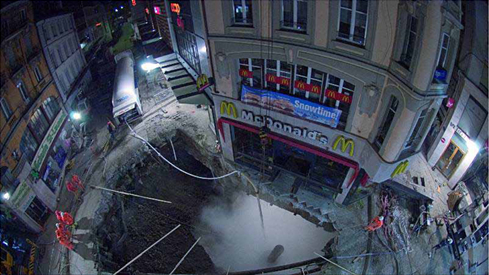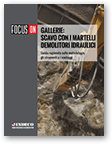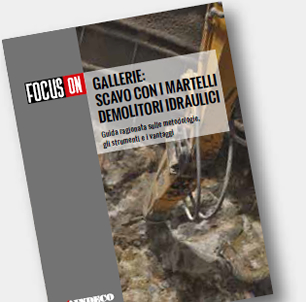“But Indeco’s response to these situations lies in the versatility of its hydraulic breaker” claims INDECO engineer Alessandro Ciccolella. “Whereas the tunnel-boring machine (or TBM, for short) is currently regarded as one of the most efficient and best-known excavation methods, there are various situations (unusual size and/or position of the tunnel, curve radius, logistical challenges, etc) where using a TBM would be either inefficient or inadvisable, due to its lack of flexibility, and to the excessive costs and risks it would involve.

Accident at Place Saint-Laurent (www.dwill.ch)
On 23 February 2005, part of a tunnel under construction collapsed under Place Saint-Laurent, in the centre of Lausanne.
More than 500 m³ of debris (water and earth) collapsed into the tunnel, forming a huge sinkhole fifteen metres deep. A large pocket of water had not been noticed during the initial explorations. (Wikipedia)
By contrast, the hydraulic breaker is a versatile, economical and efficient method that has proven without doubt to be an ideal complement, mainly to drill and blast, when excavating tunnels whose geological and geometrical profiles make other excavation methods risky, difficult or uneconomical”.
 FOCUS ON
FOCUS ON FOCUS ON
FOCUS ON
